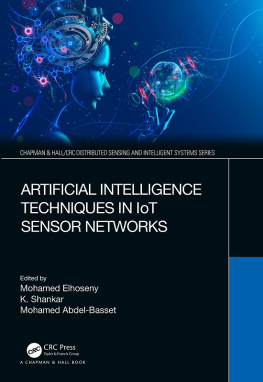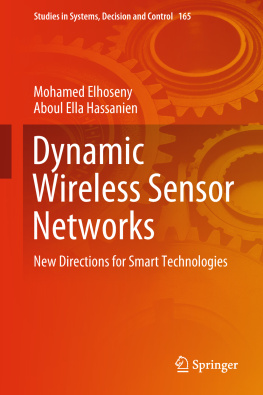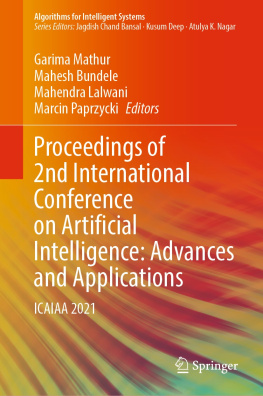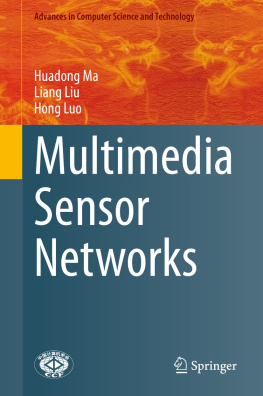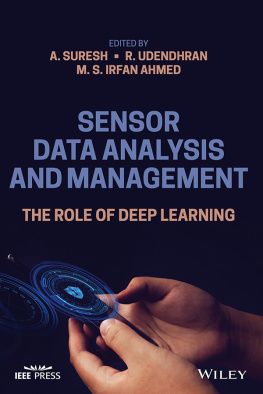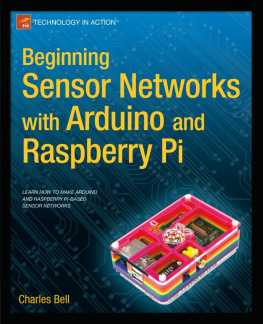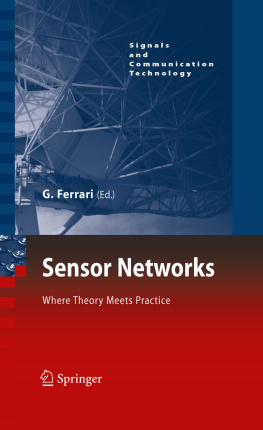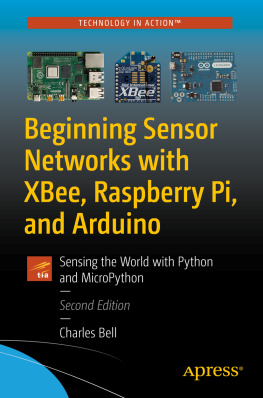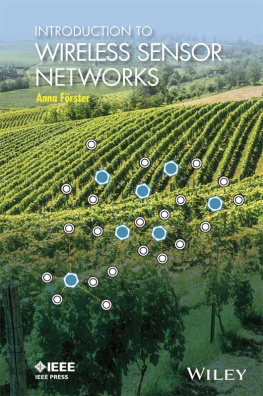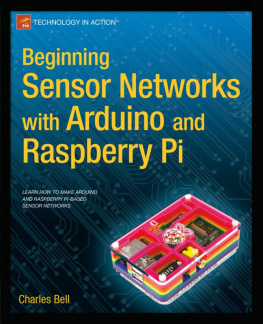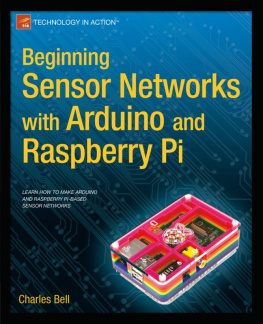
Chapman & Hall/CRC Distributed Sensing and Intelligent Systems Series
Series Editors: Mohamed Elhoseny and Xiaohui Yuan
Applications of Cloud Computing
Approaches and Practices
Prerna Sharma, Moolchand Sharma, Mohamed Elhoseny
Artificial Intelligence Techniques in IoT Sensor Networks
Mohamed Elhoseny, K. Shankar, Mohamed Abdel-Basset
For more information about this series please visit: https://www.routledge.com/ChapmanHallCRC-Distributed-Sensing-and-Intelligent-Systems-Series/book-series/DSIS
First edition published 2021
by CRC Press
6000 Broken Sound Parkway NW, Suite 300, Boca Raton, FL 33487-2742
and by CRC Press
2 Park Square, Milton Park, Abingdon, Oxon, OX14 4RN
2021 selection and editorial matter, Mohamed Elhoseny, K. Shankar, Mohamed Abdel-Basset; individual chapters, the contributors
CRC Press is an imprint of Taylor & Francis Group, LLC
The right of Mohamed Elhoseny, K. Shankar, Mohamed Abdel-Basset to be identified as the authors of the editorial material, and of the authors for their individual chapters, has been asserted in accordance with sections 77 and 78 of the Copyright, Designs and Patents Act 1988.
Reasonable efforts have been made to publish reliable data and information, but the author and publisher cannot assume responsibility for the validity of all materials or the consequences of their use. The authors and publishers have attempted to trace the copyright holders of all material reproduced in this publication and apologize to copyright holders if permission to publish in this form has not been obtained. If any copyright material has not been acknowledged please write and let us know so we may rectify in any future reprint.
Except as permitted under U.S. Copyright Law, no part of this book may be reprinted, reproduced, transmitted, or utilized in any form by any electronic, mechanical, or other means, now known or hereafter invented, including photocopying, microfilming, and recording, or in any information storage or retrieval system, without written permission from the publishers.
For permission to photocopy or use material electronically from this work, access
Trademark notice: Product or corporate names may be trademarks or registered trademarks and are used only for identification and explanation without intent to infringe.
Library of Congress Cataloging-in-Publication Data
Names: Elhoseny, Mohamed, editor. | Shankar, K., editor. | Abdel-Basset, Mohamed, 1985- editor.
Title: Artificial intelligence techniques in IoT-sensor networks / edited by Mohamed Elhoseny, K. Shankar, Mohamed Abdel-Basset.
Description: First edition. | Boca Raton : CRC Press, 2021. | Series: Chapman & Hall/CRC distributed sensing and intelligent systems series | Includes bibliographical references and index.
Identifiers: LCCN 2020037221 | ISBN 9780367439255 (hardback) | ISBN 9781003007265 (ebook)
Subjects: LCSH: Sensor networks. | Internet of things. Classification: LCC TK7872.D48 A78 2021 | DDC 006.3--dc23
LC record available at https://lccn.loc.gov/2020037221
ISBN: 9780367439255 (hbk)
ISBN: 9781003007265 (ebk)
Typeset in Minion Pro
by KnowledgeWorks Global Ltd
Contents
Table of Contents
Page List
Landmarks
I N RECENT TIMES, ARTIFICIAL intelligence (AI)-, machine learning (ML)-, and Internet of things (IoT)-based systems have become popular and find applicability in several domains. These solutions facilitate the creation of new products and services in many different fields. IoT architecture typically consists of a collection of sensors that gathers distinct kinds of data and transmits them to a base station, which uploads the data to the cloud. From there, it can be made available to consumers and/or businesses as actionable intelligence. While there are IoT architectures that influence ubiquitous computing devices like smartphones as either base station or sensor, the IoT-based sensor networks (SNs) allow the businesses to deploy IoT platforms and monitor the condition of their devices or other equipment. SNs are undergoing great expansion and development and the combination of both AI and SNs are now realities that are going to change our lives. The integration of these two technologies benefits other areas such as Industry 4.0, IoT, Demotic Systems, etc. Furthermore, SNs are widely used to collect environmental parameters in homes, buildings, vehicles, etc., where they are used as a source of information that aids the decision-making process and, in particular, it allows systems to learn and to monitor activity. New AI and ML real-time or execution time algorithms are needed, as well as different strategies to embed these algorithms in sensors.
This book, Artificial Intelligence Techniques in IoT Sensor Networks, examines the application of AI algorithms in the diverse aspects of SNs. This book includes original contributions on new methods and approaches to develop recent AI-enabled applications and intelligent decision-making models for SNs. It offers solutions to various real-time problems in SNs. This book contains 13 chapters. Topics range from healthcare diagnosis, wireless SNs, transportation, Social IoT (SIoT), face sketch synthesis (FSS), and so on, and are solely concentrated on AI applications.
introduces AI-based IoT implementation for the teleradiology network for medical image segmentation using the adaptive regularized Gaussian kernel fuzzy c-means (FCM) technique. The chapter derives an improved FCM based on the adaptive regularized Gaussian kernel with the non-linear tensor diffusion filter for abdomen CT images.
introduces AI- and IoT-based logistic transportation planning models based on the hybridization of fuzzy logic with the modified particle swarm optimization (HFMPSO) algorithm.
develops a new big data analytics method in SIoT using butterfly optimization-based feature selection with the gradient boosting tree (GBT) technique. It also aims to employ the big data-enabled Hadoop framework for big data processing.
proposes a new fuzzy logic-based clustering with data aggregation protocol for the wireless sensor networks (WSNs)-assisted IoT system. This method can be used to aggregate data using the error-bounded lossy compression (EBLC) technique.
presents a smart home recommendation system from natural language processing services with a clustering technique. The proposed model aims to build a completely utilitarian voice-based home computerization framework using IoT, embedding (word displaying), and natural language processing services (NLPS).
develops a metaheuristic-based kernel extreme learning machine (KELM) model for disease diagnosis in industrial IoT SNs. The presented model includes the spider monkey optimization (SMO) algorithm to fine-tune the parameters of KELM for maximized classification performance.
introduces an effective new fuzzy support vector machine with the synthetic marginal over-sampling technique (SMOTE) model for the class imbalance problem in IoT and cloud-based disease diagnosis.
presents an energy-efficient unequal clustering algorithm using hybridization of the social spider (SS) with krill herd (KH) in IoT-assisted WSN. The SS algorithm initially selects the tentative cluster heads and then the KH algorithm is applied to choose the final cluster heads.
aims to develop an IoT- and 5G-enabled faster region proposal network with the fast regional convolutional neural network (RCNN) with the generative adversarial network (GAN) model for FSS.
Next page
